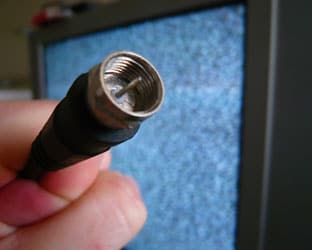They may be celebrating the new pact between Major League Baseball and Fox and TBS in some quarters, but members of the American Cable Association are doing the exact opposite. All the trade group sees is higher programming costs.
Add in a recently-inked deal between MLB and ESPN, and the rights to MLB are worth $12.4B over eight years. It is said to represent more than a 100% increase over the fees currently being collected by MLB.
MLB Commissioner Bud Selig was very happy with the deal. He commented, “I have often said in recent years that we are living in the golden age of baseball and that the game has never been more popular. But to see the unprecedented and historic commitment these networks have made to televising Major League Baseball for years to come is truly amazing.”
ACA had an entirely different take on the deal. President and CEO Matthew M. Polka said, “The plain truth is that these MLB deals will send monthly pay-TV bills streaking skyward. They will make life hard for families whose incomes, hammered by the recession, can’t keep pace with the greed of broadcasters, cable networks and sports leagues. And these MLB deals follow the announcement of equally harmful deals between the National Football League and CBS, NBC, Fox and ESPN worth more than $42 billion.”
Polka continued, “Cable or satellite TV service consisting of a few dozen channels at a reasonable price is a great deal. But insane sports contracts are destroying a business model that once balanced the interests of consumers, pay-TV operators, programmers and advertisers. If sports leagues, broadcasters, and programmers are unable to moderate themselves, then ACA will have no choice but to join with consumers to seek intervention in this increasingly broken marketplace.”
RBR-TVBR observation: The more costs go up, the stronger the case for a la carte.
For example, in most cases, every subscriber to an MVPD service fork out cash every month for ESPN, the most expensive cable channel of them all, but only a fraction of subscribers actually watch it on a consistent basis. According to BIGinsight, only 31.3% of adults 18+ are regular watchers of the network – that means their habit is being supported by the other 68.7% who go there occasionally or not at all.
Broadcast stations should fare very well in an a la carte environment – well, network affiliates with strong local news operations, anyway. Despite the proliferation of cable-only options, broadcast networks still provide over 90% of the top programs in a given week.
And no cable channel can match local broadcast television when it comes to local content. Local broadcast is one program channel on MVPDs that is still priced at a bargain rate insofar as retransmission fees are concerned.
If an a la carte system does come to pass because some channels are priced beyond what most consumers are willing to pay, the losers will be small niche cable channels and small independent broadcasters – as it stands now, they can hold down a channel on an MVPD and pick up niche viewers and catch the attention of others who are channel surfing and happen to stop in. Those same viewers may not be quite so willing to pick them off of an a la carte menu.
The more exorbitant the pricing of the ESPNs of the world, the tougher it will be for everybody else. Something to think about.





